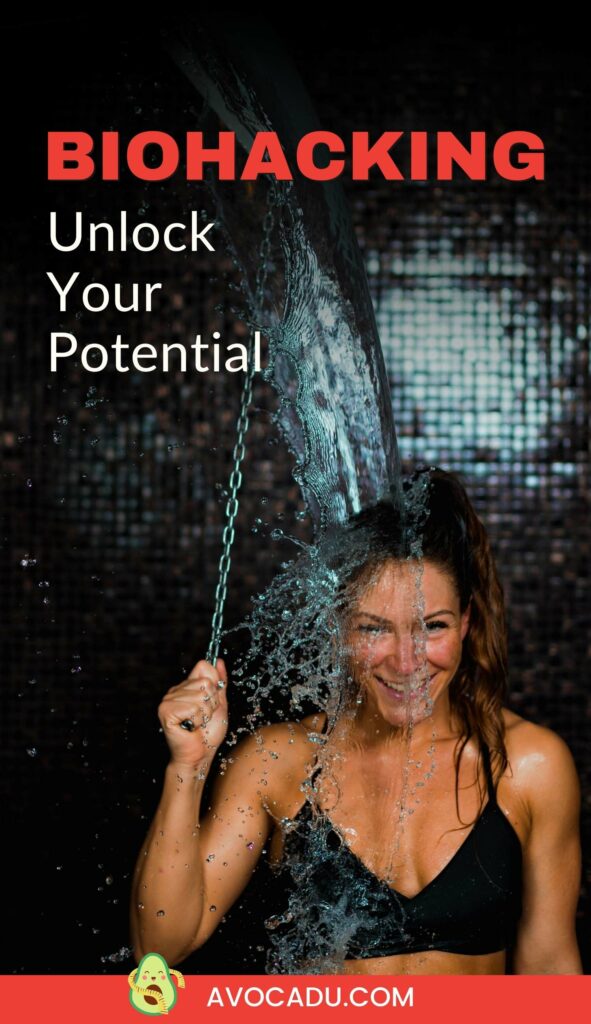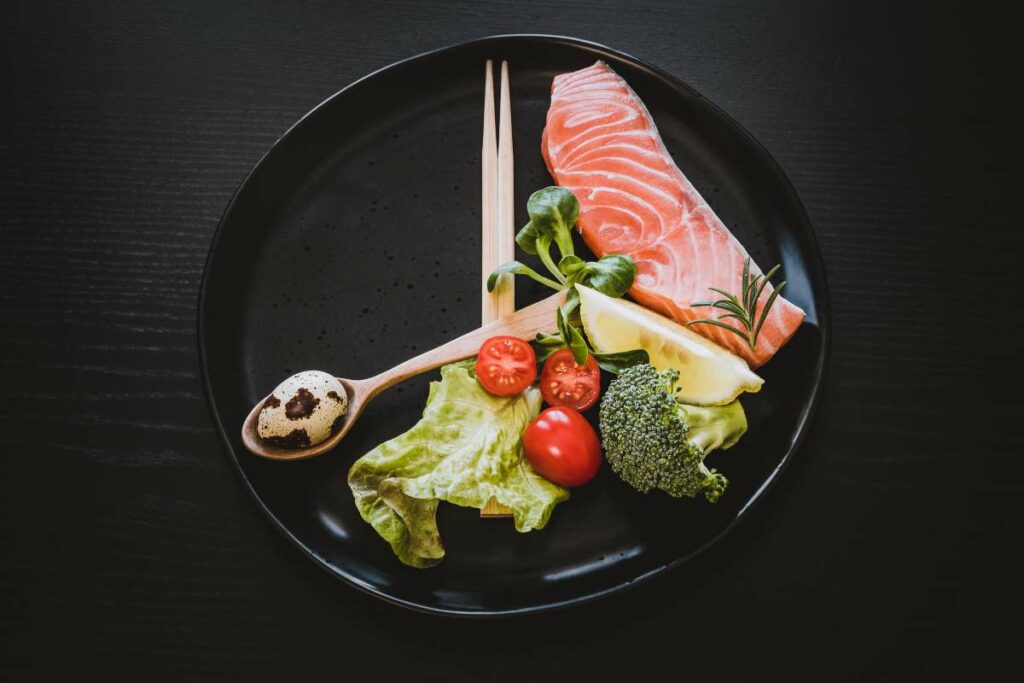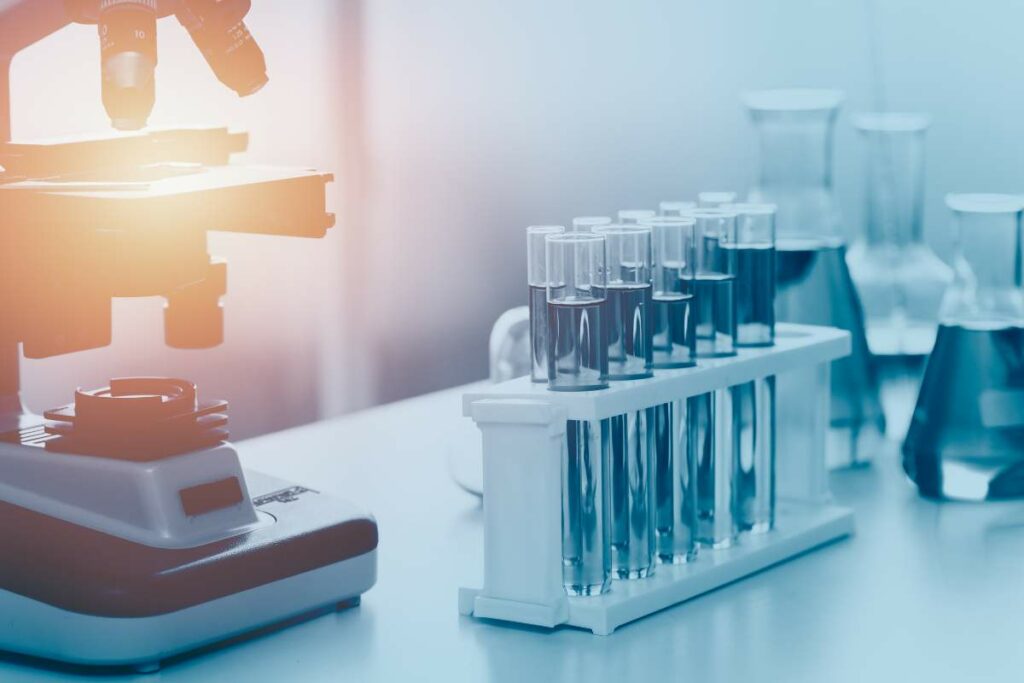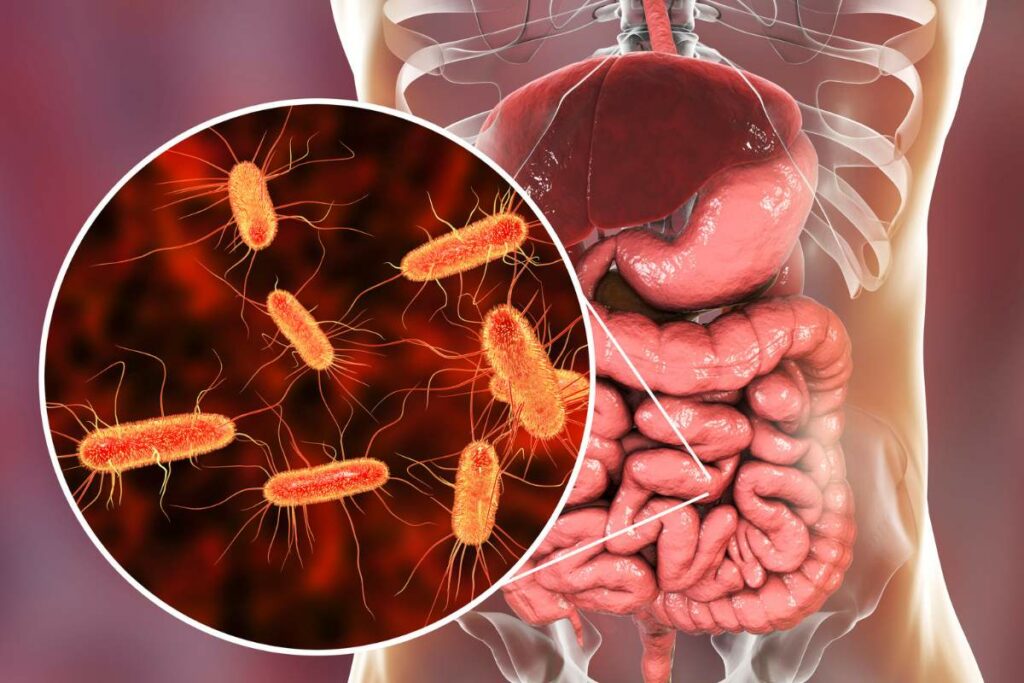Biohacking: Transforming Personal Health and Wellness
In your journey toward better personal health and wellness, you may have stumbled upon a fascinating trend: biohacking.
This isn’t just a passing fad, but a strategic mix of science, nutrition, technology, and medicine, all designed to put the power of well-being right into your hands.
With biohacking, you are the architect of your own health, using the most recent advances to enhance your life and tap into your full potential.
Let’s explore this together, uncovering the biohacking strategies that are changing not just our understanding of health and wellness, but how we live it every day.

This post may contain affiliate links, which helps keep this content free. Please read our disclosure for more info.
Nutrigenomics: A Personalized Path to Optimal Health
Have you ever wondered why certain diets work wonders for some people but fail to make a difference for others? The answer lies in our genes.
Nutrigenomics, a cutting-edge field of study, seeks to understand the complex interaction between our genetic makeup and our diet.
At its core, nutrigenomics is about personalization. It recognizes that we’re all unique, from our physical features to our genetic code.
As a result, the one-size-fits-all approach to nutrition simply doesn’t work. Instead, nutrigenomics enables you to tailor your diet according to your genes, optimizing your health in a way that’s uniquely suited to you.
By understanding how your genes interact with different foods and nutrients, you can tailor your diet to fit your body’s unique needs. Here are some examples of how nutrigenomics comes into play:
Caffeine Metabolism
Certain genetic variations can affect how your body processes caffeine. For example:

Fast metabolizers quickly break down caffeine, often feeling its energizing effects for a shorter period. However, their quick metabolism can be beneficial in protecting against heart disease associated with high caffeine intake.
Slow metabolizers process caffeine at a slower rate. They can feel the caffeine “buzz” for a longer time, but if they consume too much, they have a higher risk of developing heart disease.
Related Article: Effects of Coffee on the Body: The Good, The Bad, and The Ugly
Lactose Intolerance
Your genes can indicate whether you’re likely to be lactose intolerant, based on the presence or absence of the gene variant responsible for lactase production.
Lactase is the enzyme that digests lactose, the sugar found in milk. People with lactose intolerance don’t produce enough lactase and, therefore, may need to limit or avoid dairy products.
Gluten Sensitivity

Certain genetic variants can make a person more susceptible to gluten sensitivity or celiac disease, an autoimmune disorder triggered by gluten, a protein found in wheat, barley, and rye.
Nutrigenomic testing can help identify these variants, potentially prompting a person to consider a gluten-free diet to avoid triggering symptoms.
Alcohol Tolerance
Genetic variants can also influence how efficiently a person metabolizes alcohol.
Some people have a variant of the alcohol dehydrogenase gene that makes them metabolize alcohol slower, which can lead to an accumulation of a toxic byproduct called acetaldehyde, causing symptoms like facial flushing and increased heart rate.
Knowing this can help individuals modulate their alcohol consumption.
Vitamin Utilization
How our bodies absorb and use certain vitamins is also linked to our genes. For instance, some people have a genetic variant that affects the metabolism of Vitamin B6, which plays a vital role in brain development and function.
This can lead to a deficiency despite adequate dietary intake and may necessitate a higher dietary intake or supplementation to meet the body’s needs.
Response to Fats
Different people metabolize fats differently based on their genetic makeup.
Some individuals might have a variant in a gene that leads to increased levels of LDL (“bad”) cholesterol when they consume saturated fats, increasing their risk of heart disease.
For these people, a diet low in saturated fats might be beneficial.
Through nutrigenomic testing and a deeper understanding of your genetic profile, you can gain insight into these and many other dietary factors.
This can guide you to make more personalized choices about your diet and lifestyle, paving the way for improved health and wellness.
Nootropics and Smart Drugs: The Quest for Enhanced Mental Performance

When it comes to biohacking, the brain is just as much a playground as the body. An increasingly popular arena within biohacking circles revolves around nootropics and smart drugs.
Promising improved cognitive function, enhanced creativity, heightened motivation, and sharpened memory, these substances have caught the attention of those eager to give their mental performance a boost.
Caffeine: Yes, your morning coffee is a nootropic! Known for its stimulating effects, caffeine enhances alertness and can help improve concentration. It’s an accessible first step into the world of nootropics.
L-Theanine: Often found in green tea, L-Theanine is said to promote relaxation without drowsiness. When combined with caffeine, it can help smooth out the stimulant’s jitters and extend its cognitive-boosting benefits.
Modafinil: Originally designed for treating sleep disorders, Modafinil is now popular off-label as a cognitive enhancer. Users report increased alertness, improved focus, and reduced fatigue. However, it’s prescription-only and its long-term effects are still not fully understood.
Racetams: This family of drugs, including Piracetam, Aniracetam, and Oxiracetam, are often used to boost memory, focus, and mood. Despite widespread use in the nootropic community, scientific research on their effects is limited, and they are not approved by the FDA.
Adaptogens: These natural substances, including herbs like Ashwagandha and Rhodiola Rosea, are used to help the body adapt to stress and promote a sense of calm and focus.
Omega-3 Fatty Acids: Commonly found in fish oil, Omega-3s are essential for brain health. They are associated with improved mood and cognitive function and can be obtained through diet or supplementation.
It’s worth noting that the world of nootropics and smart drugs, while exciting, should be navigated with caution. Some substances have robust scientific backing, while others have only anecdotal evidence or limited research.
The long-term effects of many smart drugs are still not fully understood, and their legal status can vary depending on the country and whether they are prescribed for specific conditions.
Keep in mind that cognitive enhancement also extends to non-drug strategies, such as mindfulness practices, sleep optimization, and maintaining a healthy diet and exercise routine.
Intermittent Fasting: Harnessing the Power of Strategic Eating

One popular practice among biohackers that has gained mainstream attention is intermittent fasting (IF).
Unlike traditional diets that focus on what to eat, intermittent fasting is all about when to eat. It involves cycling between periods of eating and fasting, thereby giving your body a chance to tap into its fat stores and burn them off.
Weight Loss and Fat Burning
Intermittent fasting has proven effective in aiding weight loss, and for a good reason.
During the fasting period, your insulin levels drop, and your body changes its primary energy source from glucose to stored fat, helping you burn off excess weight.
Plus, fasting periods can reduce overall calorie intake, further promoting weight loss.
Improved Metabolic Health
By regulating when you eat, intermittent fasting can help stabilize blood sugar levels, improve insulin resistance, and reduce inflammation, contributing to improved metabolic health.
This is not only beneficial for weight management but also helps reduce the risk of developing various metabolic diseases like diabetes.
Potential Increase in Lifespan
Although research is still ongoing, some studies suggest that intermittent fasting may extend lifespan.
This could be due to the combination of weight management, improved metabolic health, and the triggering of certain cellular repair processes that occur during the fasting state, such as autophagy, where your cells self-cleanse and remove damaged components.
Mental Clarity
Many practitioners of intermittent fasting report heightened mental clarity and concentration during fasting periods.
This could be because, in the absence of glucose, the body starts producing ketones, a type of molecule that may be particularly beneficial for brain function.
Intermittent fasting is a powerful tool in the biohacker’s arsenal, but it’s important to remember that everyone’s body responds differently.
As always, you should consult with a healthcare provider before starting a new regimen like intermittent fasting.
While the potential benefits are exciting, the key is finding a sustainable eating pattern that fits into your lifestyle and contributes to your overall health and well-being.
Sleep Optimization: The Secret Ingredient for Peak Health

We all know that good sleep is important for our health, but how much do we really understand about achieving quality sleep?
Enter the realm of sleep optimization, a cornerstone of biohacking that aims to enhance your sleep quality and, by extension, your overall health and well-being.
Here’s how it can make a difference:
Sleep Tracking Technology
The advent of wearable technology has revolutionized our understanding of sleep. Devices like smartwatches and fitness trackers offer detailed insights into your sleep patterns by monitoring factors like sleep duration, stages, and interruptions.
By analyzing this data, you can identify areas for improvement and track the effectiveness of your sleep-enhancing strategies.
Light Therapy
Our bodies’ sleep-wake cycles, or circadian rhythms, are significantly influenced by light. Using light therapy, you can help regulate your biological clock to improve sleep.
For example, exposing yourself to bright light in the morning can help you wake up, while dimming the lights as bedtime approaches can signal your body that it’s time to sleep.
Optimal Sleep Environment
Creating an environment conducive to sleep is essential for sleep optimization.
This might involve controlling room temperature (cooler temperatures are typically better for sleep), reducing noise, and eliminating light sources that can disrupt your sleep.
Related Article: ChiliSleep’s OOLER Sleep System Review: Goodbye Night Sweats!
Sleep-Inducing Habits
Adopting certain habits can help prepare your body for restful sleep.

This could include establishing a regular sleep schedule, creating a bedtime routine that allows you to relax and unwind, avoiding screens close to bedtime, and being mindful of your diet (limiting caffeine and heavy meals in the evening).
Sleep-Enhancing Supplements
Some biohackers also utilize natural sleep aids like melatonin, magnesium, or chamomile to help promote sleep.
These should, of course, be used responsibly and in consultation with a healthcare provider.
Sleep optimization is much more than getting the recommended 7-9 hours of sleep each night. It’s about improving the quality of your sleep and aligning it with your body’s natural rhythms.
By prioritizing and enhancing your sleep, you’re investing in your overall health and well-being, reaping benefits that can range from improved cognitive function and mood to better metabolic health and immune function.
Exercise and Movement Optimization: Taking Fitness to New Heights
When it comes to maintaining a healthy body and mind, movement and exercise play a pivotal role.
Biohackers leverage the latest technology and innovative exercise regimens to optimize their physical performance and health. Let’s dive into how this transformation unfolds:
Wearable Technology
From smartwatches to fitness trackers, wearable technology has become a game-changer in the realm of physical fitness.

These devices provide real-time data on various aspects of your physical health, including heart rate, steps taken, calories burned, and sleep quality.
They can even monitor your progress during different forms of exercise, giving you insights into your performance and helping you tailor your workouts to reach your fitness goals.
Personalized Workout Plans
Using the data gathered from wearable tech, biohackers can design exercise routines that suit their specific needs and goals.
Whether it’s weight loss, muscle gain, improving stamina, or enhancing flexibility, having a personalized workout plan can lead to more effective and rewarding exercise sessions.
Experimenting with Different Exercise Forms
Biohackers often experiment with different types of exercise to discover what works best for their bodies.
This might involve combining high-intensity interval training (HIIT) for cardiovascular health, strength training for muscle development, and yoga or Pilates for flexibility and mindfulness.
The goal is to find a balance that keeps exercise engaging and beneficial.
Recovery Optimization
Understanding the importance of rest and recovery is an integral part of exercise optimization.

This could involve practices like foam rolling for muscle recovery, getting adequate sleep for bodily repair, and maintaining proper hydration and nutrition to replenish the body after workouts.
Mind-Muscle Connection
Biohackers understand the importance of the mind-muscle connection in enhancing workout effectiveness.
By focusing on the muscle being trained and consciously engaging it during workouts, they can help improve muscle activation and, ultimately, the outcomes of their training.
Exercise and movement optimization is all about making your workouts smarter, not necessarily harder. It’s about understanding your body’s signals, pushing its limits responsibly, and nurturing it with the right balance of movement and rest.
In the realm of biohacking, fitness is a journey of continuous learning and adaptation, always with an eye on improving overall health and performance.
Cold Thermogenesis: Embracing the Chill for Health Benefits
If you’re looking for a thrilling way to invigorate your health, consider cold thermogenesis. While the idea of exposing yourself to cold temperatures might seem a bit extreme, it’s a method that many biohackers swear by.

Why? Because when done responsibly, cold thermogenesis can offer a number of health benefits. Let’s take a closer look:
Boosted Metabolism
When your body is exposed to cold temperatures, it has to work harder to maintain your core body temperature.
This process, known as thermogenesis, results in increased calorie burn and, over time, can help boost your metabolic rate.
Reduced Inflammation
Cold exposure can also have an anti-inflammatory effect on your body. It does this by reducing the flow of inflammatory substances in your body, which can help with recovery after intense workouts and improve overall health.
Improved Mood
There’s a reason why you might feel invigorated after a cold shower.
Cold exposure can trigger the release of mood-boosting hormones like endorphins, potentially leading to an improved mood and reduced stress levels.
Enhanced Resilience
Regularly subjecting your body to cold temperatures can improve your physiological resilience over time.
This is the capacity to adapt to challenges and recover from various forms of stress, contributing to overall health and well-being.
Increased Brown Fat Activity
Unlike white fat, which stores energy, brown fat burns energy to generate heat. Cold exposure can stimulate the activity of brown fat, which can contribute to improved metabolic health.
Methods for practicing cold thermogenesis vary widely, from taking cold showers and ice baths to wearing cooling vests or swimming in cold water.
However, it’s important to approach this practice responsibly and progressively, starting with lower levels of cold exposure and gradually increasing as your body adapts.
As always, consult with a healthcare professional before embarking on this or any other new health regimen.
By harnessing the power of cold, biohackers tap into an age-old survival mechanism that not only helps keep them warm but also brings about a host of potential health benefits.
So the next time you wince at the idea of a chilly dip, consider the invigorating potential of cold thermogenesis.
Mindfulness and Meditation: Cultivating a Healthy Mind

While much of biohacking can seem focused on physical transformations, the mind is equally important in this holistic pursuit of health.
One of the ways biohackers are fine-tuning their mental well-being is through mindfulness and meditation.
These practices can lead to a wealth of benefits, from reduced stress to improved cognitive function. Let’s explore how they work:
Stress Reduction
One of the most well-known benefits of mindfulness and meditation is stress reduction.
By teaching you to focus on the present moment and accept it without judgment, these practices can help you reduce feelings of stress and anxiety, promoting a sense of calm and relaxation.
Improved Cognitive Function
Regular mindfulness and meditation practices can enhance your cognitive abilities, including attention, memory, and decision-making skills.
This could be because these practices help clear your mind, reducing mental clutter and enabling you to focus better.
Enhanced Emotional Well-being
Mindfulness and meditation can also boost your emotional health by helping you develop a greater awareness of your thoughts and feelings.
This can lead to improved emotional regulation, increased self-awareness, and a more positive outlook on life.
Biofeedback Devices
Biohackers often use biofeedback devices to enhance their mindfulness and meditation practices.
These devices can provide real-time feedback on physiological functions like heart rate variability (HRV), brainwave patterns, and skin temperature.
By monitoring these data, biohackers can learn to control these functions, improving their stress response, focus, and overall mental health.
Mindfulness in Everyday Life
While formal meditation practices are helpful, biohackers also understand the value of incorporating mindfulness into everyday activities.
This could mean paying full attention during a conversation, consciously savoring a meal, or taking a few moments to breathe deeply and center oneself amid a hectic day.
Through mindfulness and meditation, biohackers tap into the power of the mind to reduce stress, improve mental function, and enhance their overall sense of well-being.
By learning to stay present and accepting each moment as it comes, we can all cultivate a more mindful, healthier life.
As with any practice, the key is consistency and finding a method that resonates with you. So, take a deep breath, and embark on your mindfulness journey.
DIY Biology: Unleashing the Scientist Within
For those with a spirit of adventure and curiosity, DIY biology presents a world of discovery at your fingertips.
It allows you to conduct experiments at home, giving you a hands-on approach to understanding your body and health. Let’s see what this intriguing facet of biohacking entails:
Home Genetic Testing
Home genetic testing kits offer you a glimpse into your genetic makeup.

They can provide insights into a variety of genetic predispositions, from your potential response to certain foods to your risk of developing specific diseases.
The results can empower you to make informed decisions about your health and lifestyle.
Microbiome Analysis
DIY biology also extends to understanding your microbiome – the community of microbes living in your body.
At-home testing kits allow you to analyze your gut microbiome, which can impact everything from digestion to mental health.
This knowledge can guide your diet and probiotic choices, helping optimize your gut health.
Blood Biomarker Tests
Blood tests can reveal a lot about your health. DIY blood testing kits offer a way to track various biomarkers linked to heart health, nutrition, stress, sleep, and more.
These tests can help you monitor your health progress and adjust your lifestyle choices accordingly.
DIY Experimentation
DIY biology also fosters a spirit of experimentation. You can test the effects of various lifestyle changes on your body, from altering your sleep routine to trying a new diet.
Keeping a detailed record of these experiments and their effects can lead to better personal understanding and self-improvement.
Home Lab Equipment
For the truly dedicated, it’s possible to set up basic lab equipment at home for more complex biological experiments.

While this requires a higher level of commitment and understanding of safety protocols, it can offer unparalleled insights into biological processes.
Remember, while the world of DIY biology offers an exciting opportunity to delve deeper into understanding your body, it also requires a responsible approach.
Always consider the ethical implications of your experiments, follow safety guidelines, and consult with healthcare professionals when interpreting test results.
Microbiome Manipulation: Harnessing Microscopic Allies for Health
If you thought you were just “you,” think again. Trillions of microorganisms reside on and within us, creating a complex ecosystem known as the microbiome.

These tiny organisms play a substantial role in our overall health, influencing everything from digestion to mood. Let’s explore how biohackers are learning to harness the power of the microbiome for improved health:
Probiotics
Probiotics, often referred to as ‘good bacteria,’ are a go-to tool for biohackers aiming to optimize their microbiome.
These live bacteria and yeasts, typically consumed through fermented foods or supplements, can bolster gut health, improve digestion, and even impact mental health.
Prebiotics
Prebiotics are dietary fibers that act as food for our gut bacteria. By including prebiotics in their diet, biohackers can nourish their beneficial gut bacteria, promoting a balanced microbiome.
Foods high in prebiotics include artichokes, garlic, onions, asparagus, and bananas.
Fecal Microbiota Transplants (FMT)
Though perhaps not for the faint of heart, fecal microbiota transplants are an emerging method of microbiome manipulation.
This procedure involves transferring the fecal matter from a healthy donor into the gastrointestinal tract of a recipient, often used to treat certain types of infection or inflammation.
It’s a more extreme approach, and while research is still ongoing, early results suggest it may hold potential for a variety of health conditions.
Personalized Diets: Tailoring Nutrition for Your Microbiome

While ‘you are what you eat’ is a well-known saying, it might be more accurate to say ‘you are what your microbiome eats. The community of microorganisms in our gut plays a significant role in how we digest food and absorb nutrients.
This knowledge has led many biohackers to create personalized diets tailored to their unique microbiome to enhance health. Let’s dive deeper into how this works with some examples:
High-Fiber Diet: Some individuals might have a gut microbiome rich in bacteria like Bifidobacteria and Lactobacilli, known for their ability to break down dietary fiber into beneficial compounds like short-chain fatty acids (SCFAs).
These SCFAs have numerous health benefits, from reducing inflammation to supporting a healthy immune system.
In this case, a diet rich in fiber from foods like fruits, fibrous vegetables, whole grains, and legumes can support these bacteria and promote overall gut health.
Low-FODMAP Diet: On the other hand, some people might experience gut discomfort due to a surplus of bacteria that ferment specific types of carbohydrates, known as FODMAPs.
A personalized low-FODMAP diet, which minimizes foods like onions, garlic, and certain fruits and legumes, can help reduce these symptoms.
Mediterranean Diet: Research has shown that a Mediterranean-style diet rich in fruits, vegetables, whole grains, and healthy fats can increase levels of beneficial bacteria like Prevotella, linked to improved metabolic health.
If someone’s gut microbiome analysis reveals lower levels of these bacteria, adopting a Mediterranean diet might be beneficial.
Probiotic and Prebiotic-rich Diet: If a person’s microbiome lacks diversity, incorporating a diet rich in probiotics and prebiotics could be advantageous.
Probiotic foods like yogurt, kimchi, and sauerkraut can introduce beneficial bacteria, while prebiotic foods like artichokes, onions, and asparagus can nourish existing gut bacteria.
Personalized Nutrient Optimization: Microbiome analysis might also reveal how well a person metabolizes certain nutrients, leading to dietary adjustments.
For example, some people might absorb omega-3 fatty acids more efficiently, prompting an increase in foods like fatty fish and flaxseeds.
From eating for your gut bacteria to optimizing nutrient absorption, the concept of personalized diets truly embodies the saying ‘one man’s food is another man’s poison.’
It’s an exciting area of biohacking that is blurring the line between nutrition and personalized medicine, reshaping how we think about food and health.
Related Article: How I Healed My Leaky Gut, IBS, and Digestive Problems in 2 Months
Lifestyle Factors

Beyond diet, other lifestyle factors can also impact the microbiome. Regular exercise, adequate sleep, stress management – these all can influence the diversity and balance of our gut bacteria.
Hence, biohackers pay close attention to these aspects to nurture a healthy microbiome.
Manipulating the microbiome presents a promising avenue for enhancing health and preventing disease. By nurturing these microscopic allies, biohackers hope to unlock a new level of wellness.
Light Exposure Management: Mastering Your Inner ‘Light Diet’
Sunrise, sunset, the glow of a laptop screen, the blue light from your smartphone – light touches our lives in myriad ways, and biohackers are paying attention.
They understand that the nature and timing of light exposure can profoundly affect sleep, mood, and overall well-being. But how exactly can we manage light exposure for optimal health?

Morning Sunlight
The beginning of the day is an ideal time to get exposure to natural light. Morning sunlight, rich in beneficial blue light, helps reset our body’s internal clock, or circadian rhythm, enhancing wakefulness and alertness throughout the day.
Midday Bright Light
Midday light is also crucial. Regular exposure to bright light during the day can help reinforce our body’s natural rhythm, improving mood, energy levels, and sleep quality.
Limiting Blue Light at Night
Conversely, excessive blue light exposure in the evening – often from screens like laptops, smartphones, and TVs – can interfere with our body’s preparation for sleep.
Biohackers often use blue light filtering apps or glasses and adopt a ‘digital sunset,’ minimizing screen use in the hours leading up to bedtime.
Red Light Therapy
Some biohackers explore red light therapy, a technique that uses low-level red wavelengths for potential health benefits.

Research suggests it may aid wound healing, skin health, and inflammation reduction. Some also believe it can improve sleep quality, though more research is needed in this area.
Dark Therapy
Biohackers also recognize the importance of darkness for good sleep. Using blackout curtains, eye masks, and eliminating light sources in the bedroom can ensure a dark environment that supports the body’s natural production of the sleep hormone melatonin.
Light Timing and Jet Lag
For frequent travelers, adjusting light exposure can help manage jet lag.
Exposing oneself to bright light in the morning can help shift the body’s internal clock earlier (useful when traveling east), while exposure to evening light can delay the circadian rhythm (helpful when heading west).
The light around us – its intensity, timing, and color – is a powerful but often overlooked influence on our health.
By consciously managing light exposure, biohackers aim to align their lifestyle with their body’s natural rhythms, achieving improved sleep, mood, and energy.
Remember, however, that everyone’s body is different. What works best for one person may not work as well for another.
The world of light exposure management illuminates yet another fascinating area in the realm of biohacking. By becoming more attuned to the light in our lives, we can potentially unlock brighter days and more restful nights.
Embracing the Future: Biohacking’s Promising Path Forward

As biohacking continues to evolve, it’s crucial to remember the importance of safety and effectiveness.
While some of these practices have significant scientific backing, others require further research.
Through biohacking, we are embarking on an exciting journey to unravel the complexities of human health and wellness.

